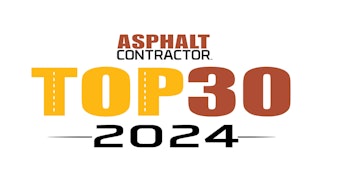
Estimating is such a crucial part of how a contractor does business that many owners or management teams will shy away from packaged construction estimating software. They think it will prevent them from using proprietary processes that make them more competitive.
Given the power and configurability of modern software, that may not be a good excuse to stay on Excel or other shadow IT products.
Low-Code No Code Estimating Software
Contractors who are intent on creating their own application for their unique processes may want to ditch Excel for low-code, no-code software that enables them to write their own application without knowing how to code. Products like Oracle APEX, Domo, Zapier and others are designed for people and teams who want to wire up their own solutions. In construction estimating, we at IRONPROS frequently run into cpntractors using Quickbase. One reason for this is that Quickbase, thanks to the acquisition of a services partner that focused on the construction industry, has a portfolio of pre-built estimating functionality to handle common construction processes, including estimating.
This speeds time to value while giving a contractor full control over how they price projects.
AI Takeoff
Estimating software will either handle take-off—creating a bill of quantities for materials, or integrate with an external take-off tool. Regardless, this can be time-consuming, and errors can lead to overpricing the project and not getting the work or underpricing it, getting the work and losing money.
Software in market now, however relies on artificial intelligence (AI) to harvest data from a drawing or plan set, automating takeoff. Even a static PDF will work because machine vision and machine learning enable this software to identify shapes and objects. Automating this process not only saves time, but reduces the risk of catastrophic loss.
“One of our investors has a glazing business,” Togal.AI President and Co-Founder Patrick Hughes said our IRONPROS Product Deep Dive. “He won a bid and realized he was over $1 million low on his numbers. Why was he $1 million low? It turns out he missed an entire floor on the takeoff. He invested in Togal.AI both as an investor and as a user confident that it will be a lot cheaper than missing an entire floor and losing another million.”
Founded in 2019 and funded in part by a Florida contractor, Togal.AI’s most predictable claim to return on investment is, however, time saved through AI-driven takeoffs so estimators can bid more work. Togal.AI can identify architectural features, measure spaces, capture linear measures for materials, automating away hours of manual work. Togal.AI sources say their customers have been able to bid 40 percent more work while increasing focus on value engineering, scoping and bid leveling.
AI Go-No-Go Decisions and Risk Identification
Estimating software is also bringing AI into decisions about which projects to bid on and how to bid around project risks. Software to support go-no-go decisions will aggregate a variety of information sources including past bidding processes and public records of who had bid on projects for a given owner. Other products are identifying risk in projects that must be mitigated in the estimate, based oftentimes on past change orders in similar projects or those with the same owner.
Companies moving in this direction include Zetane and Patabid. Both have embedded tools to automate takeoff. Zetane is working on AI do identify project risks during estimating, and should be coming to market shortly. Patabid has had useful AI features to support takeoffs for a while now, but newer AI features to support go-no-go decisions at the time of our last briefing carried no additional cost until project histories train the AI enough to consistently deliver useful results.
AI is helping contractors reduce risk in estimating by cleaning, scrubbing and harmonizing data from multiple applications used to execute projects into estimating so experiences from past projects can more easily inform new estimates.
I came from Turner Construction before I joined Toric, Toric Senior Product Manager Meena Abdelkodoos said. We started to scope out what it would take just to build out one pipeline from our financial software. And it would take a pretty massive team of data analysts and architects to create just one pipeline in a do-it-yourself format. And that is when I discovered Toric and realized we could do this globally with Toric and we could do it on a project level at the same time. So you could be collecting information on your project, and at the same time piping information into a historical warehouse for your company. All of that is being fed by the same source where the information is generated--be that your enterprise resource planning (ERP) software, that project management software, that building information modeling (BIM) software.
Estimators have to communicate with people in different departments, using different applications, particularly when they have to work on a guaranteed maximum price (GMP) basis.
With a tool like Toric, Abdelkodoos said estimators can have a more in-depth look of what actually happened in the project and how their estimate fared against actual conditions including things that were in the GCs control and things that were out of the GC's control.
Predictive Market Analytics
In situations where the contractor is also the developer, they may benefit from the ability to look into the future to optimize the design, construction, location, configuration and finishes. Software from startups like Zebel are doing just this.
Zebel may be specifically for generals and developers of larger multi-unit properties in multifamily, commercial or office but the ability to apply AI to project history and big data sources for predictive analytics is something the industry will see a lot more of. The benefits start accruing immediately because a contractor can turn around accurate estimates faster while burning less staff time. This means they can pursue more business and grow. Pencils can get sharper still with the ability to compare construction costs with other developers and general contractors segmented by geography, product type, and project size. Market and pricing data per square foot is also exposed, cutting the feasibility process from one month to an hour, in part due to the ability to look forward with rapid what-if scenario views. As the finishes, square footage, amenities and other variables change, the cost and market value data rolls up to help find the optimal project.
Cloud Estimating Software
Most construction leaders know that construction software is moving off premise and into the cloud. This makes it easier to connect estimating to other functions like project management and also helps integrations that round-trip finished project data to inform future bids and estimates. But there are multiple flavors of cloud that may drive more or fewer of these benefits:
Hosting, where software designed to run on premise is provisioned on someone else’s servers.
Managed Services, which removes some of the administrative work required to support the software, including regression testing of updates to make sure they don’t cause failures in that individual contractor’s instance.
Single tenant software-as-a-service--software designed to run in the cloud, with each customer getting their own instance. This software will be designed for communal use though, and upgrades and new functionality will be less disruptive.
Multi-tenant SaaS, where multiple customers share a single instance of the software, which is managed and updated centrally by the vendor. This software still securely segregates each customer’s data, but the centralization means software can be updated and improved more frequently, speeding up innovation.
“The marketing around cloud is … cloudy,” Pemeco CEO Jonathan Gross said in a recent Construction Tech Talk episode. “Companies are going to come in and call their systems SaaS, multi-tenant SaaS or single-tenant SaaS, but does it really pass the test? And what is the test? Well the U.S. Department of Commerce has a division called the National Institutes of Standards and Technology. And they have laid out a five-point test.
According to Gross and NIST, these five points encompass:
The first test is that to be cloud, something has to be rapidly elastic to meet demand. If the vendor brings on 50 more customers, you need to scale and increase compute capacity. If your business doubles overnight, the capacity should scale to meet that.
The cloud system needs to be able to be self-serviced on demand. So if you want to add more computing power or resources, you can’t have an army of engineers behind the scenes trying to spin things up for you. It’s got to be available on demand.
It must leverage pooled resources. That means multiple customers are sharing a common pool of resources. It could be infrastructure, it could be databases, it could be applications. It depends on the type of SaaS or cloud we’re talking about.
It needs to be accessible through the internet. One tip—if something is being marketed as SaaS and you have to VPN in, chances are it isn’t cloud.
It must be automatically measured, so the system is automatically monitoring itself and its resources.



























